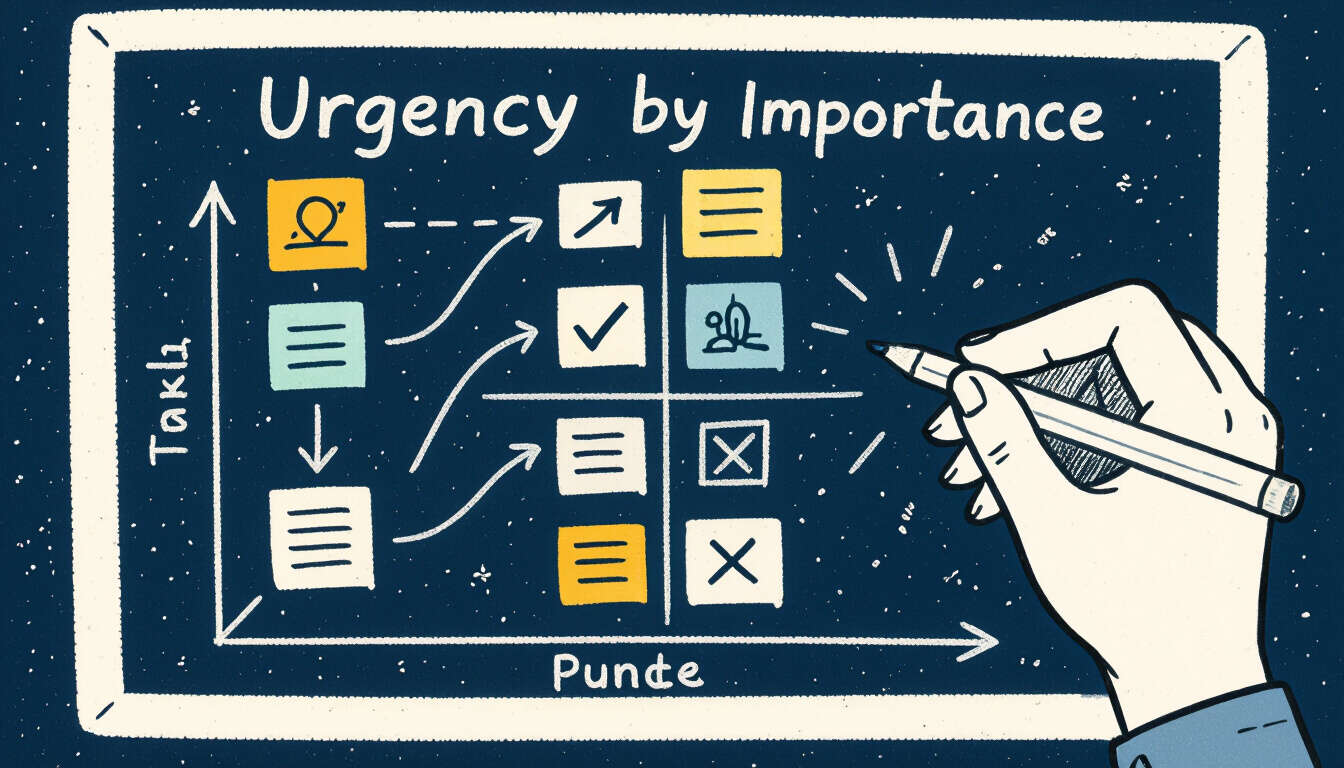Using Priority Matrices to Boost Productivity
 by Marlene Keeling
by Marlene Keeling
Priority matrices offer a simple way to organize tasks by importance and urgency, helping individuals manage time more effectively. Based on research, these tools can reduce stress and improve focus for busy professionals and students.

Priority matrices serve as essential tools for organizing daily tasks and improving overall efficiency. In the first section, we explore what these matrices entail.
Priority matrices, like the Eisenhower Matrix, categorize tasks into quadrants based on urgency and importance. For instance, one quadrant focuses on tasks that are both urgent and important, requiring immediate attention.
Research from cognitive psychology supports the use of such systems. Studies show that task prioritization leads to better decision-making outcomes. Another study indicates that individuals who use structured methods experience higher levels of focus.
For busy professionals, applying priority matrices can mean allocating time to high-impact activities. Students might find them useful during exam periods to balance study and rest.
Benefits of Priority Matrices
One key advantage is the ability to identify which tasks to tackle first. This approach helps in reducing overwhelm by breaking down responsibilities. For example, low-priority items can be deferred or eliminated, freeing up mental space.
In practice, start by listing all tasks for the day. Then, assign each one to a quadrant: urgent and important, important but not urgent, urgent but not important, or neither. This method draws from principles in time management research.
Implementing Priority Matrices in Daily Life
To begin, gather your tasks in a notebook or digital app. Next, evaluate each task's urgency and importance. For efficiency strategies, consider setting aside time each morning to update your matrix.
Regular use can lead to noticeable improvements. A survey of workers revealed that those employing these techniques reported better work-life balance. Additionally, combining matrices with short breaks enhances sustained attention.
In conclusion, integrating priority matrices into routines offers a practical path to enhanced productivity. By consistently applying these methods, individuals can achieve more with less effort, making them invaluable for anyone seeking to optimize their day.
